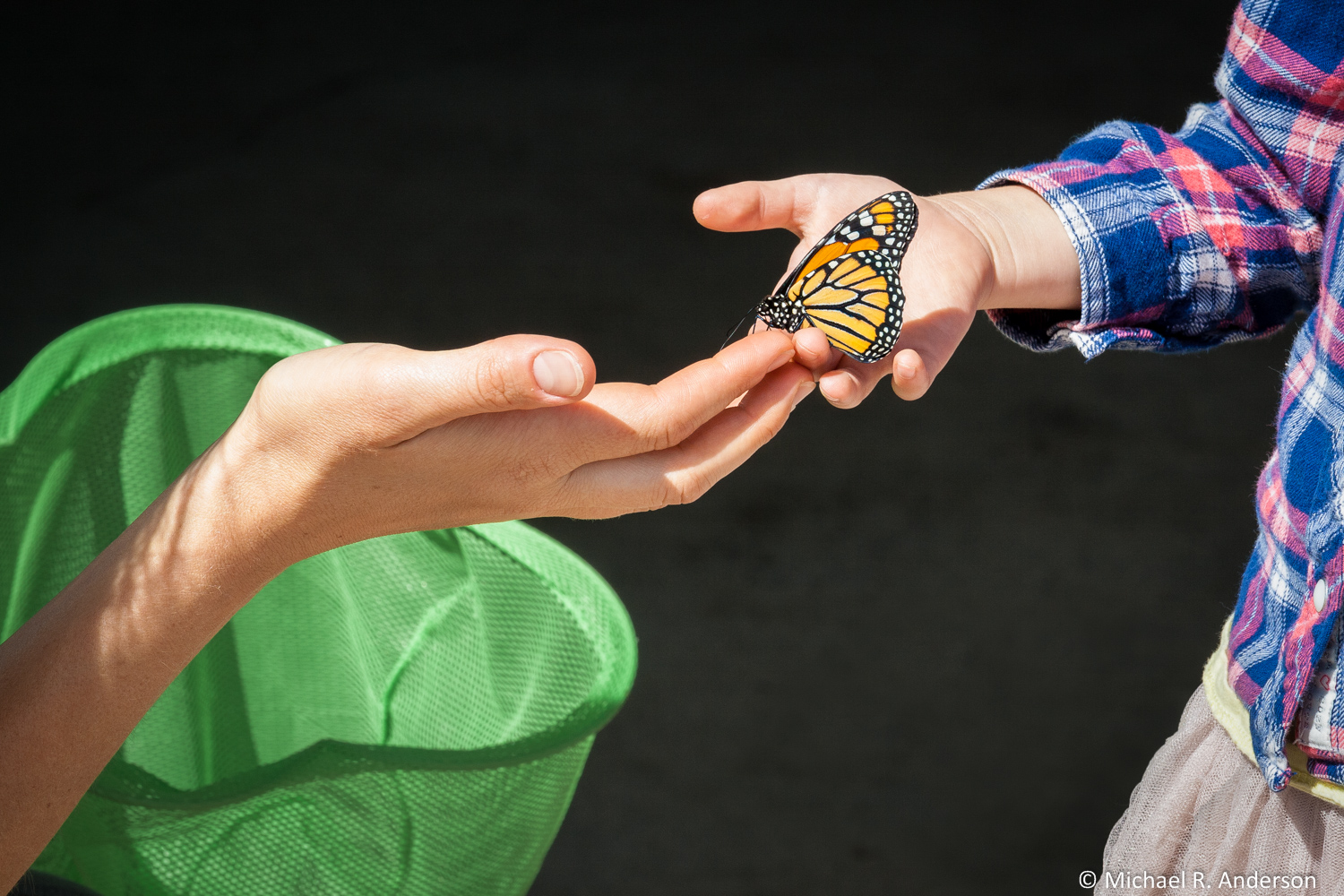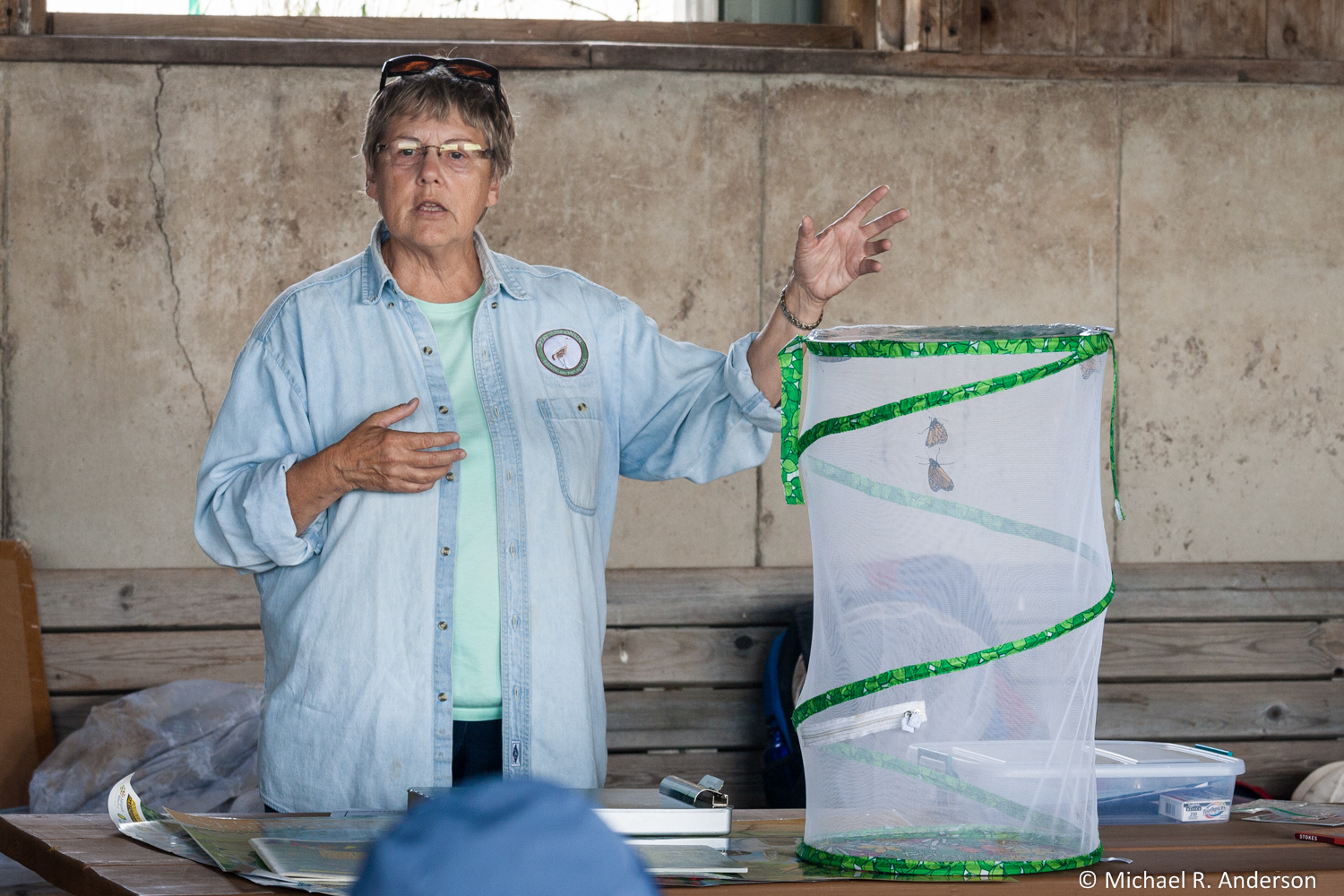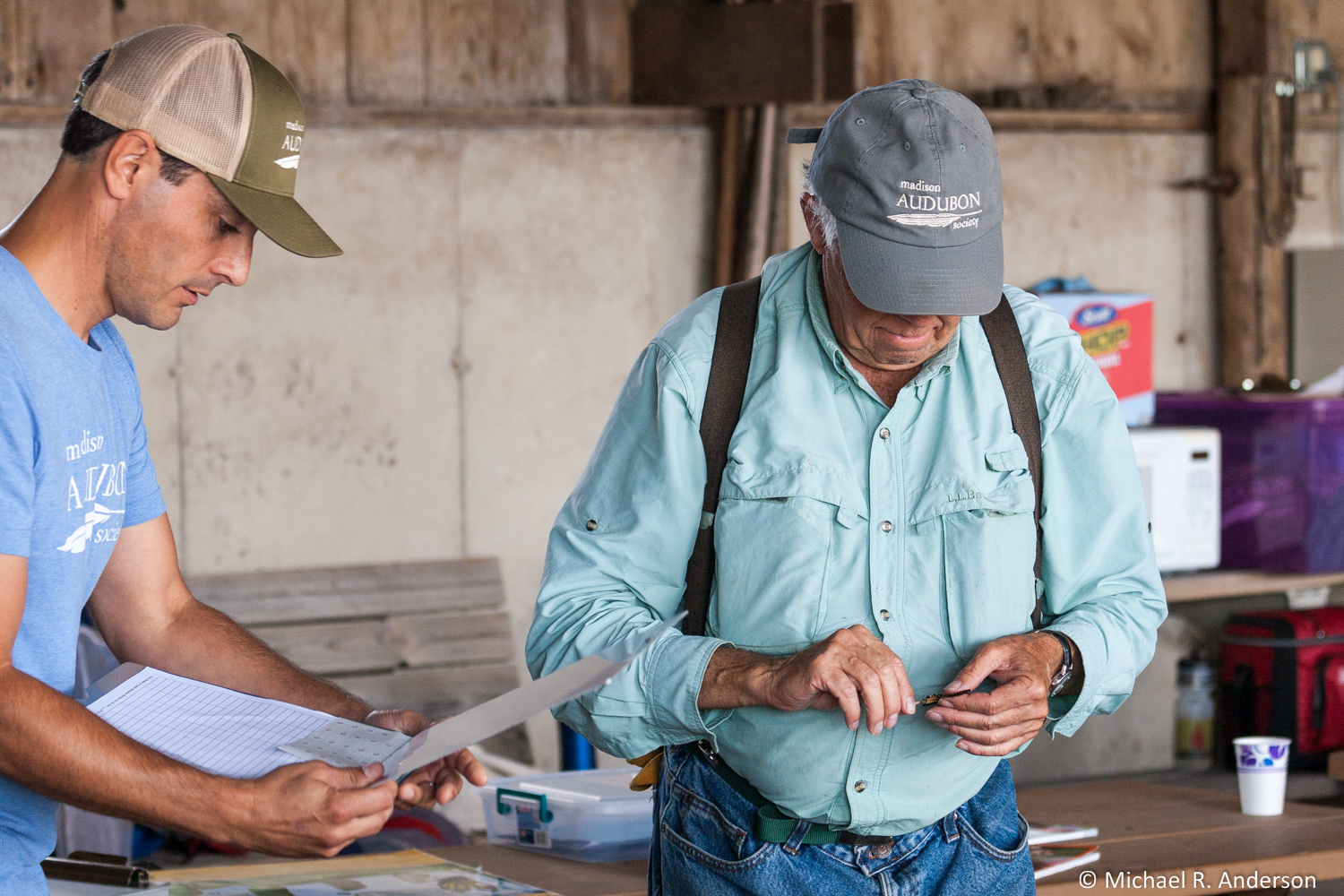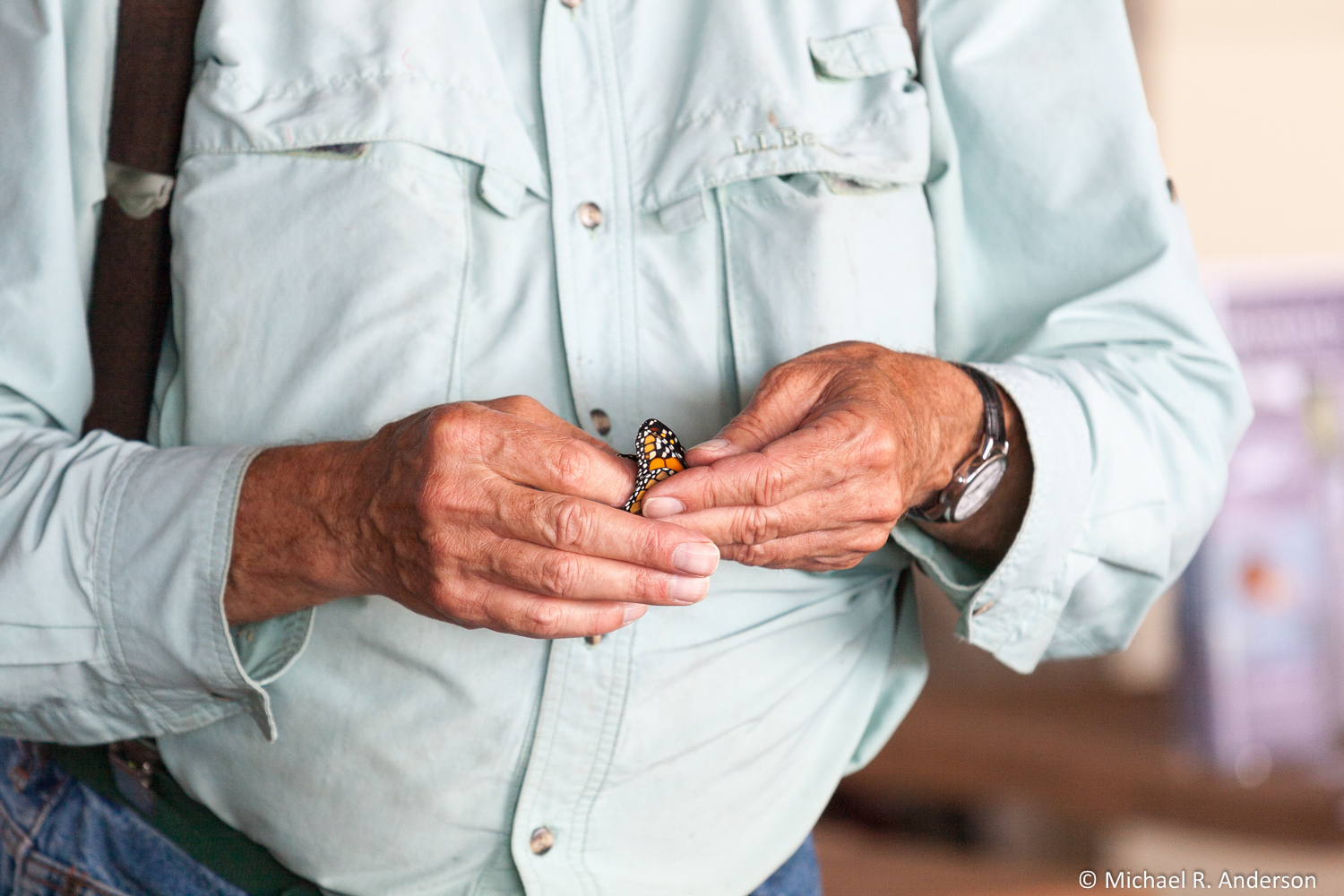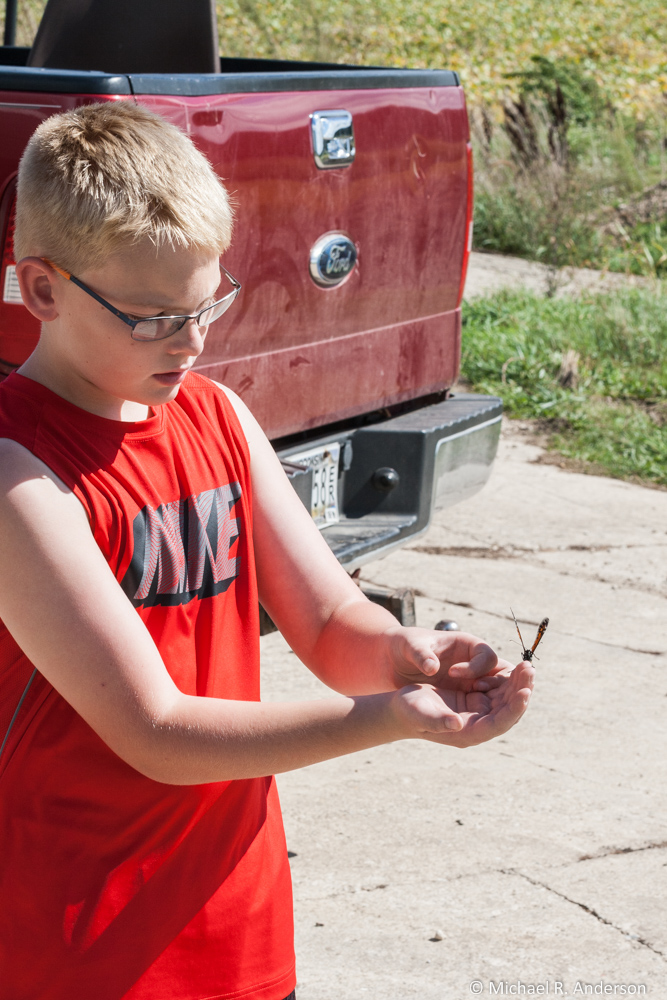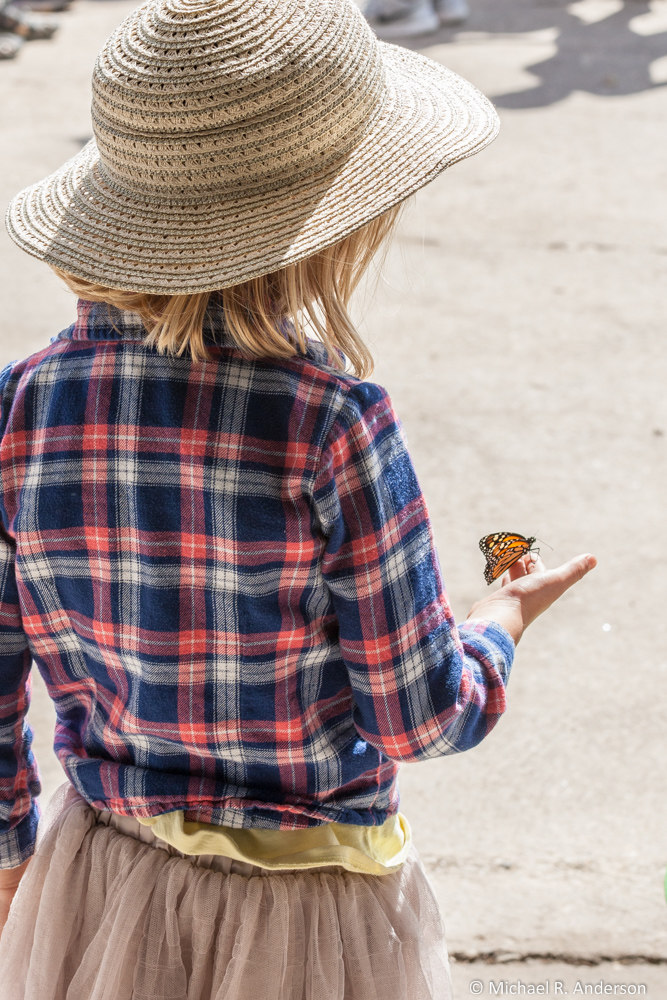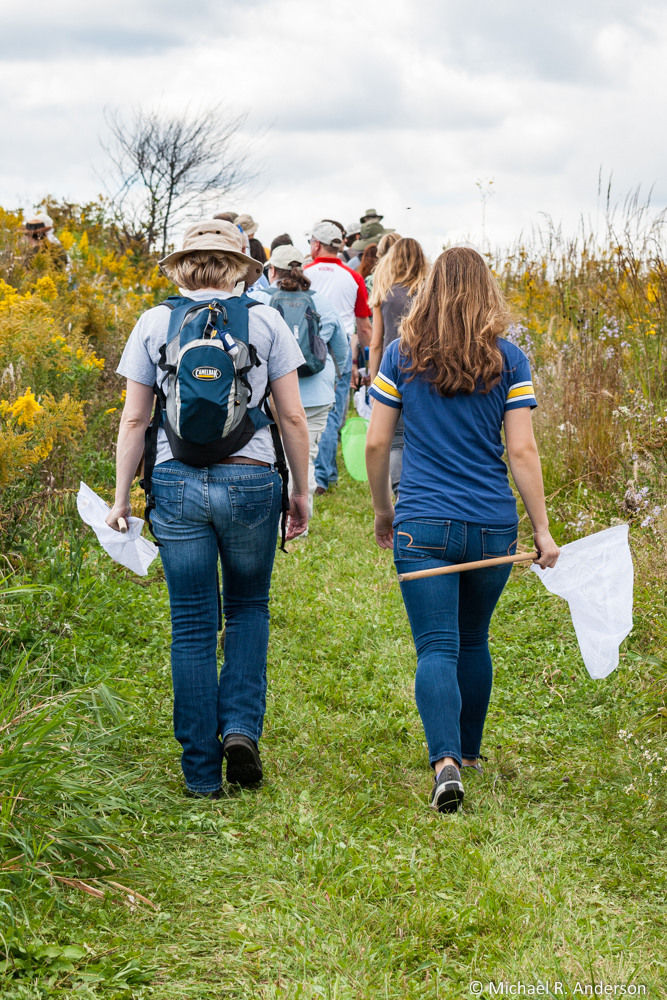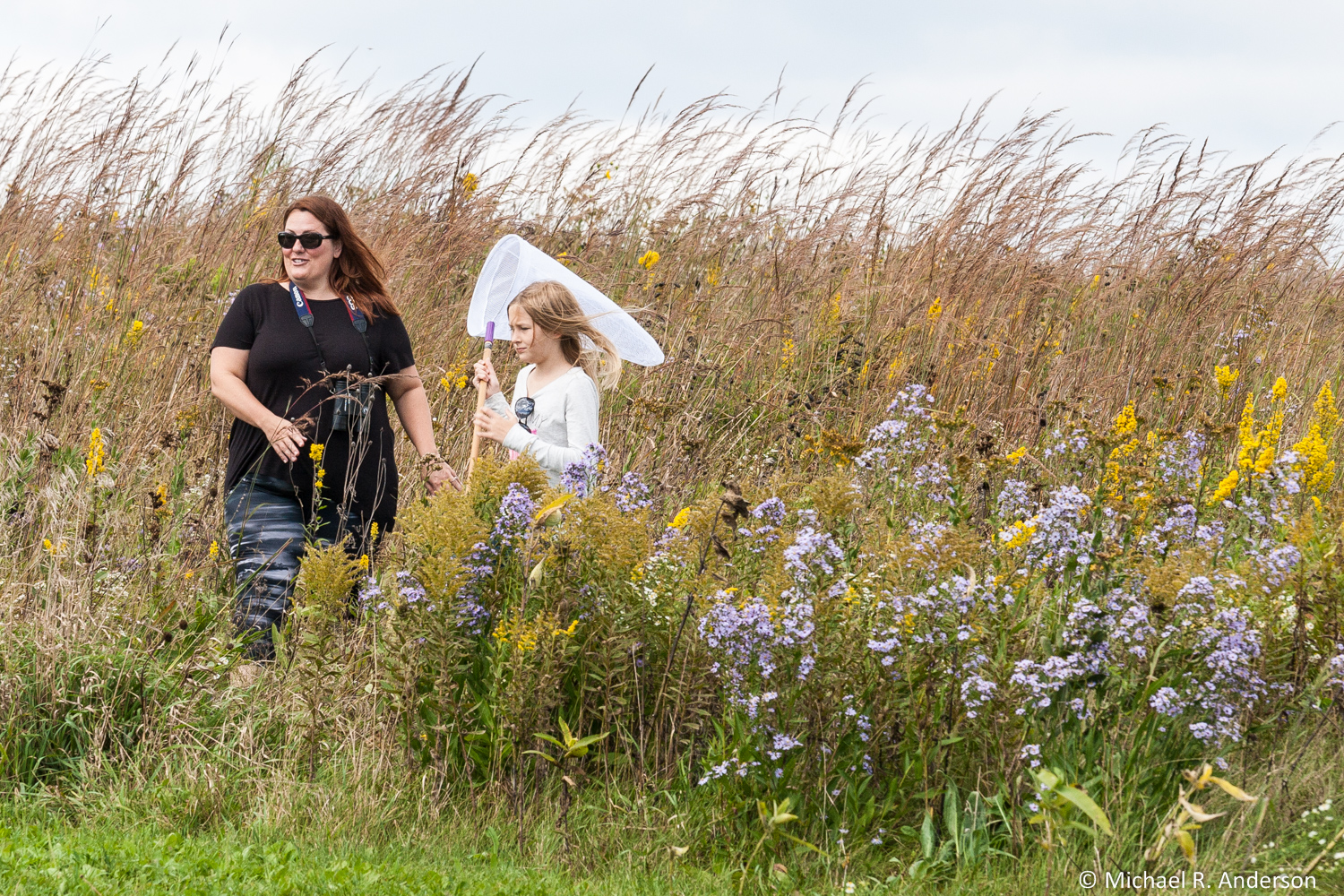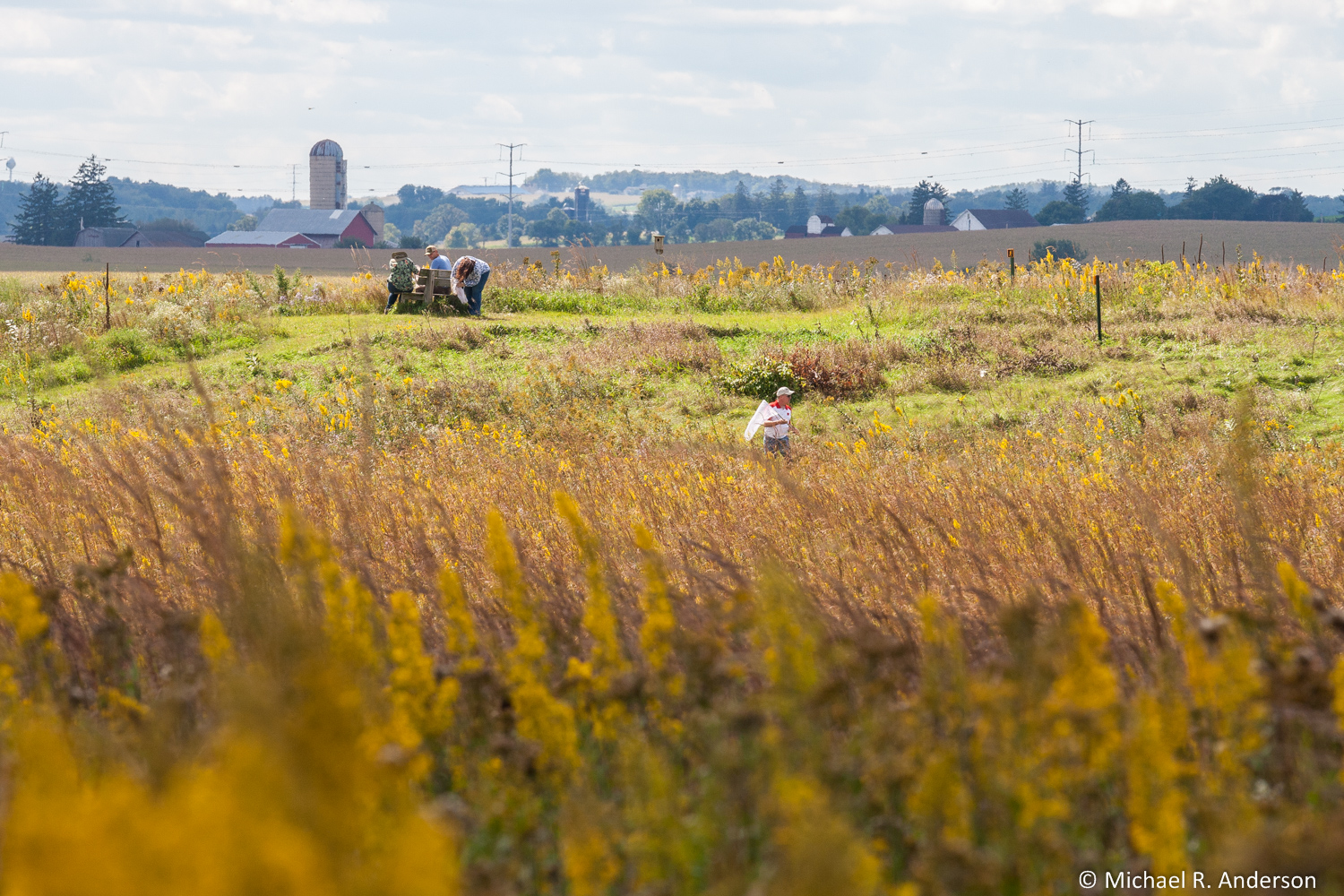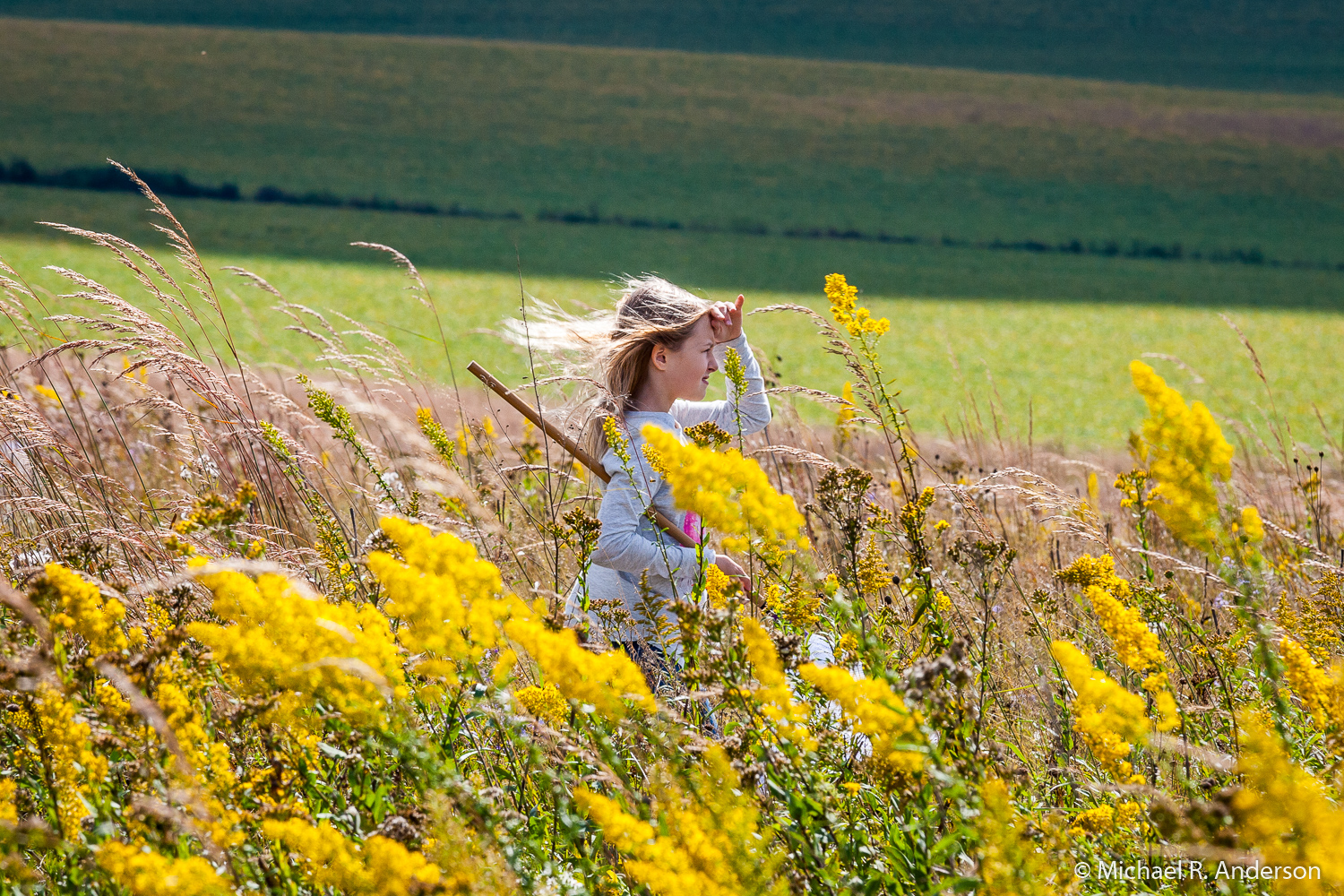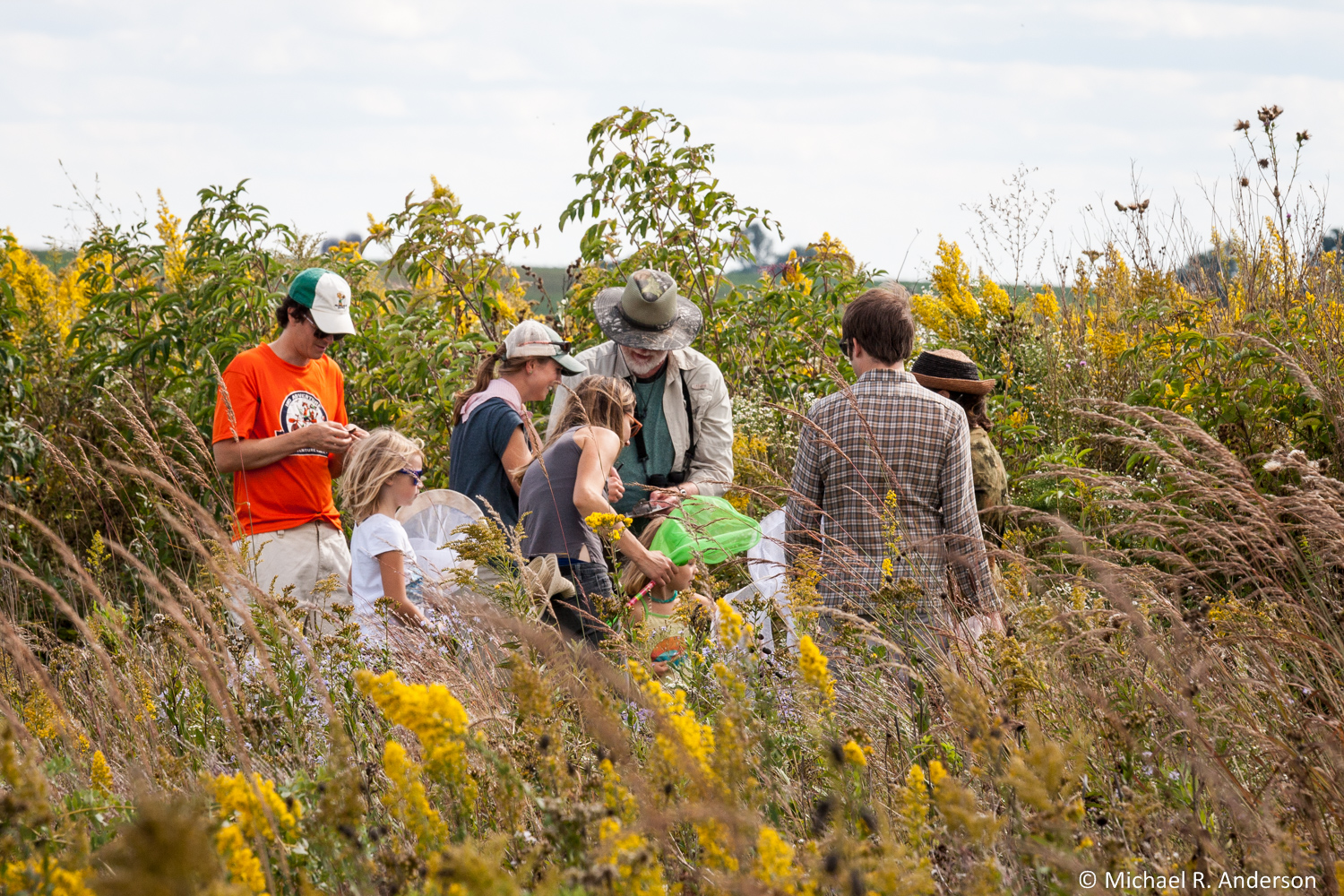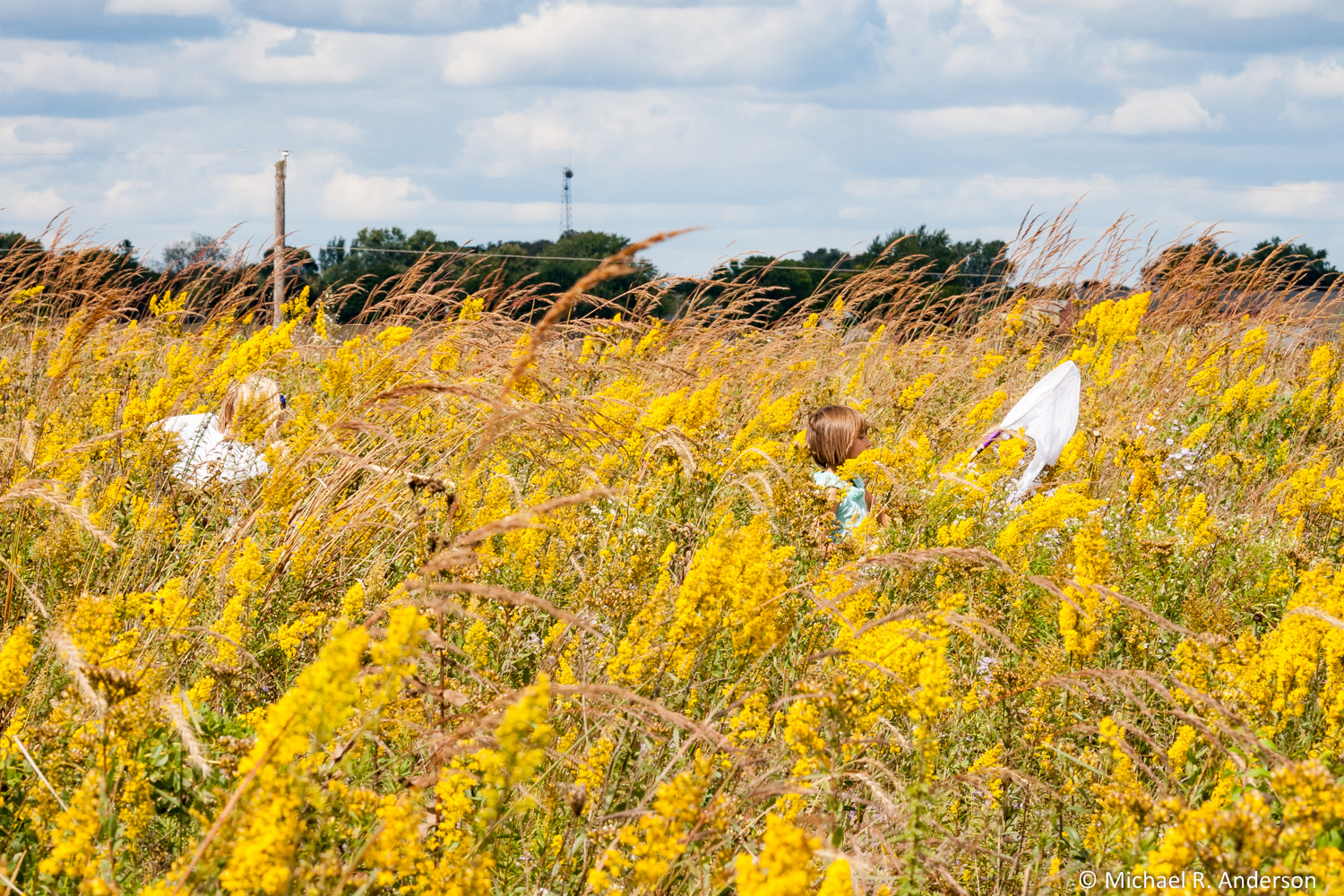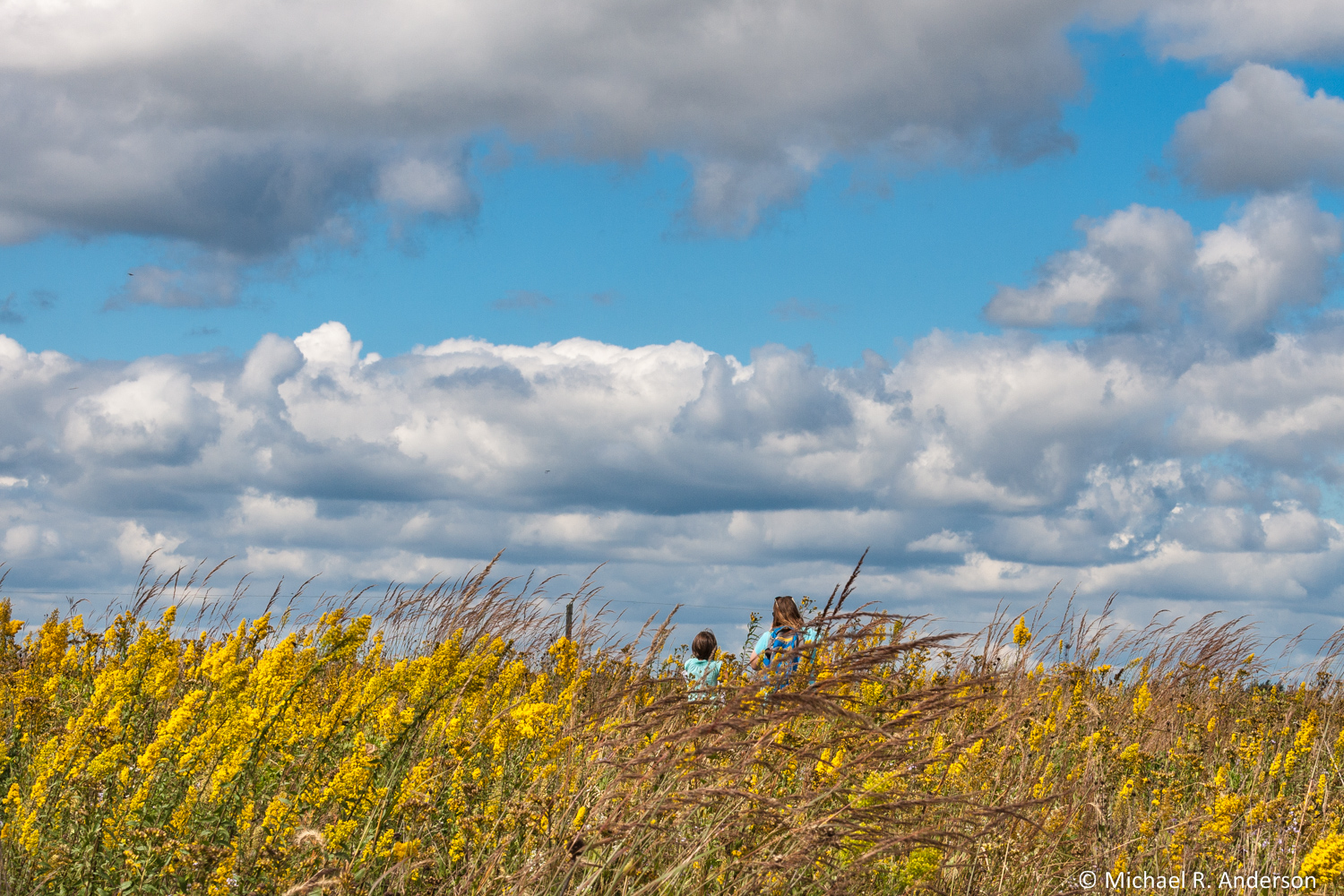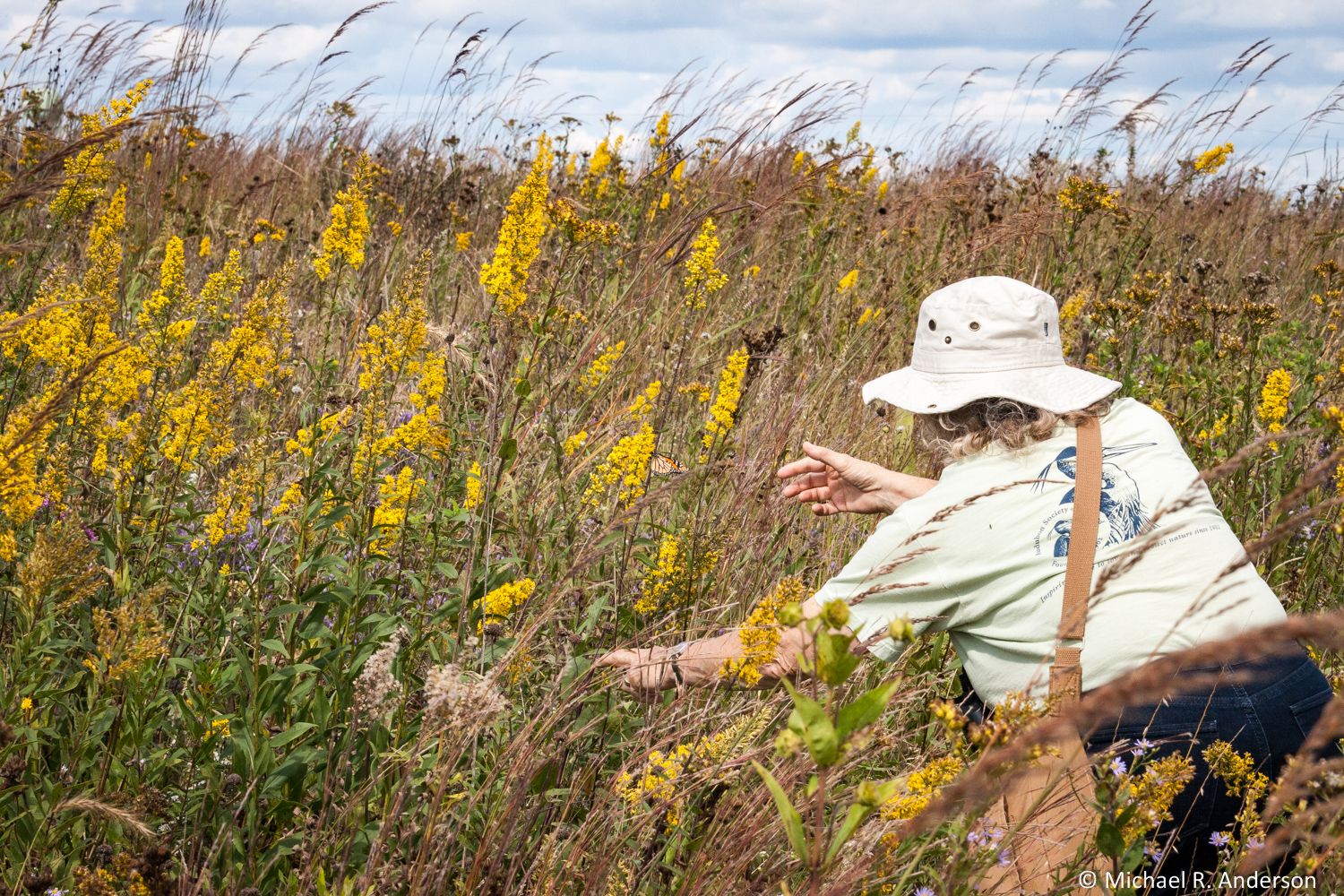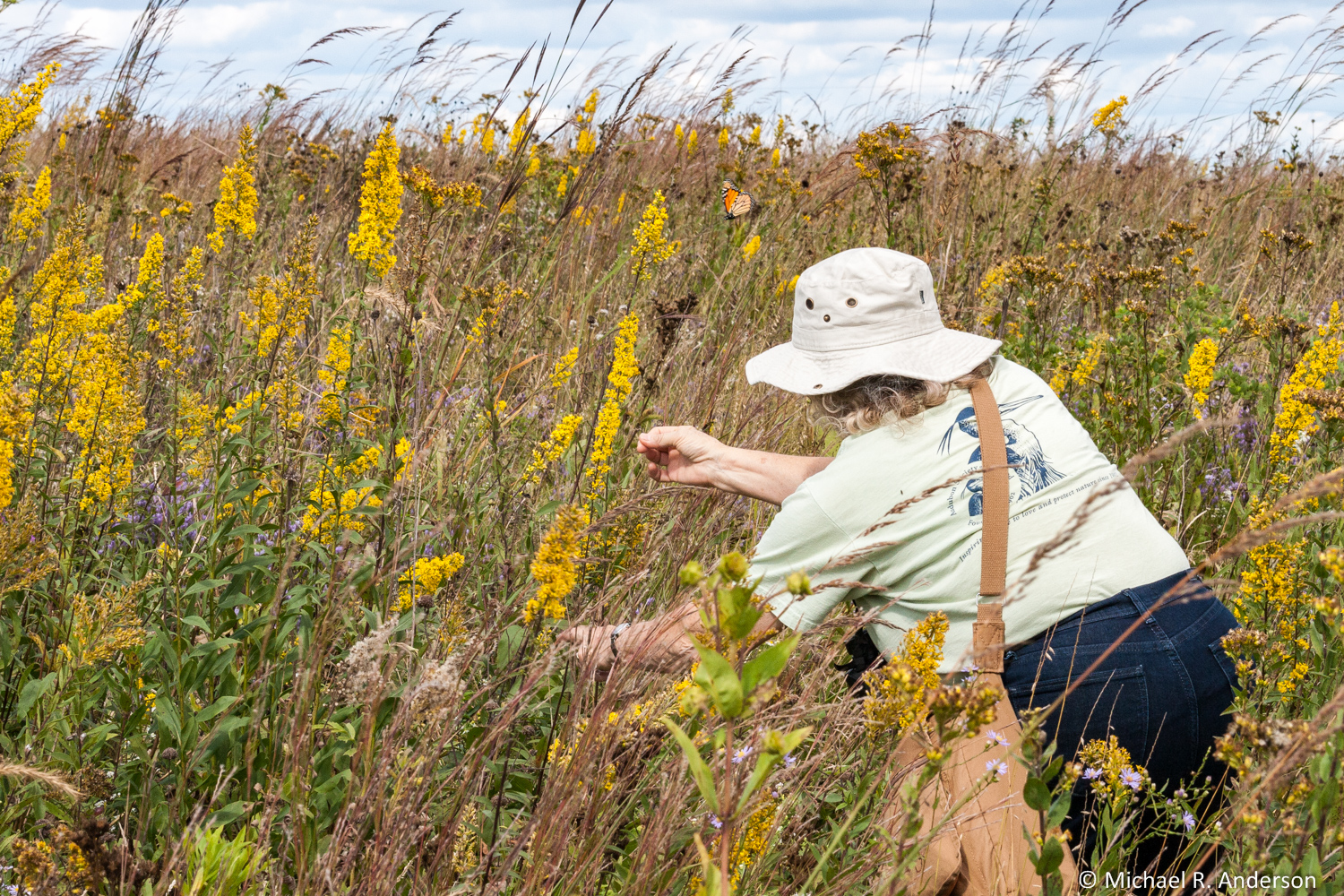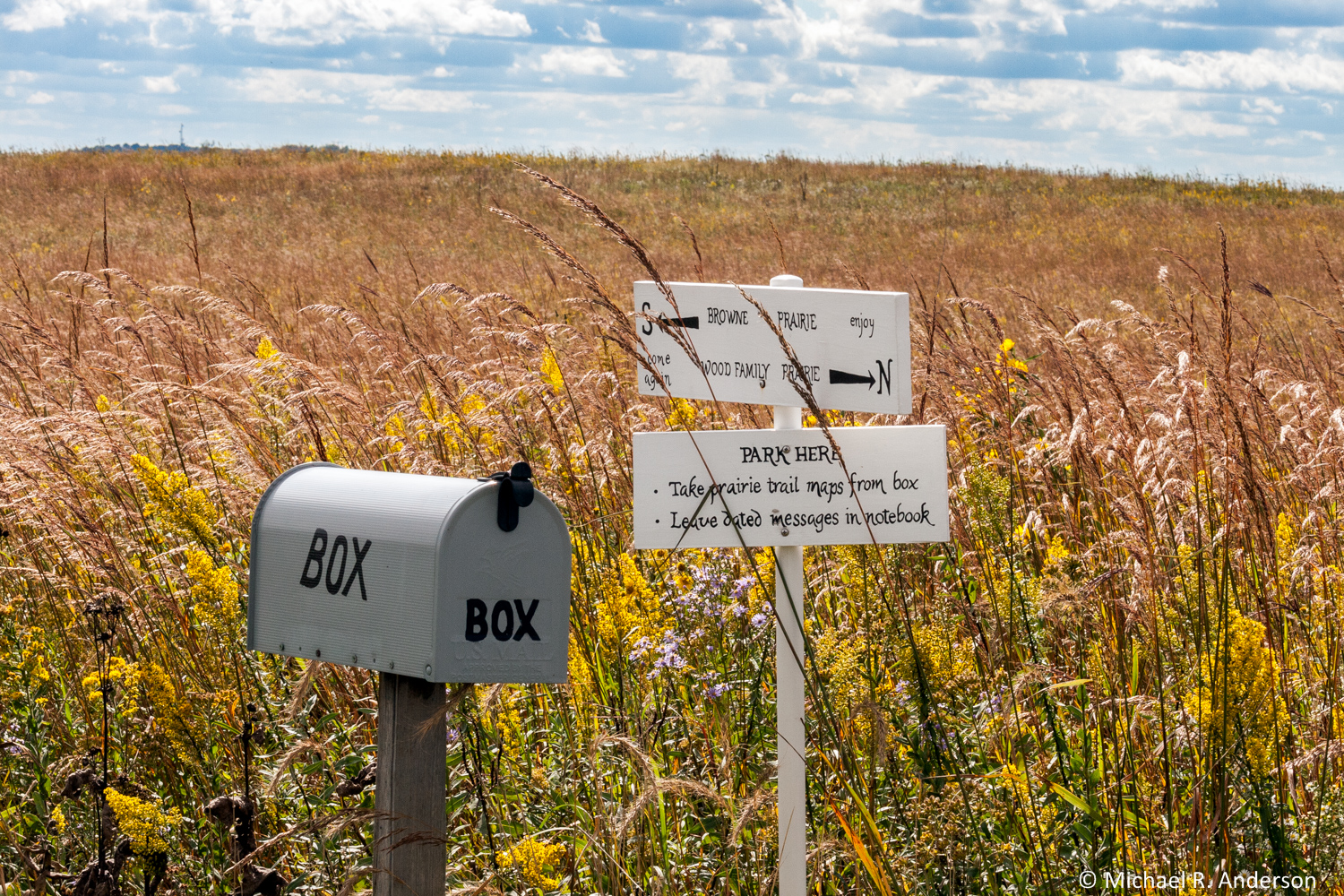Most people could probably identify a monarch butterfly. And, I suspect that most people are aware of the dwindling population of monarchs and of the current efforts to reverse that trend. But, did you know that monarchs are the only butterfly known to migrate on a round-trip route like birds? And, similar to birds, researchers tag monarchs in order to study their migration. To help with this research, the Madison Audubon Society ran a “citizen science” event at Goose Pond Sanctuary and invited members and friends to participate. So, last Saturday, my wife and I went out to join them.
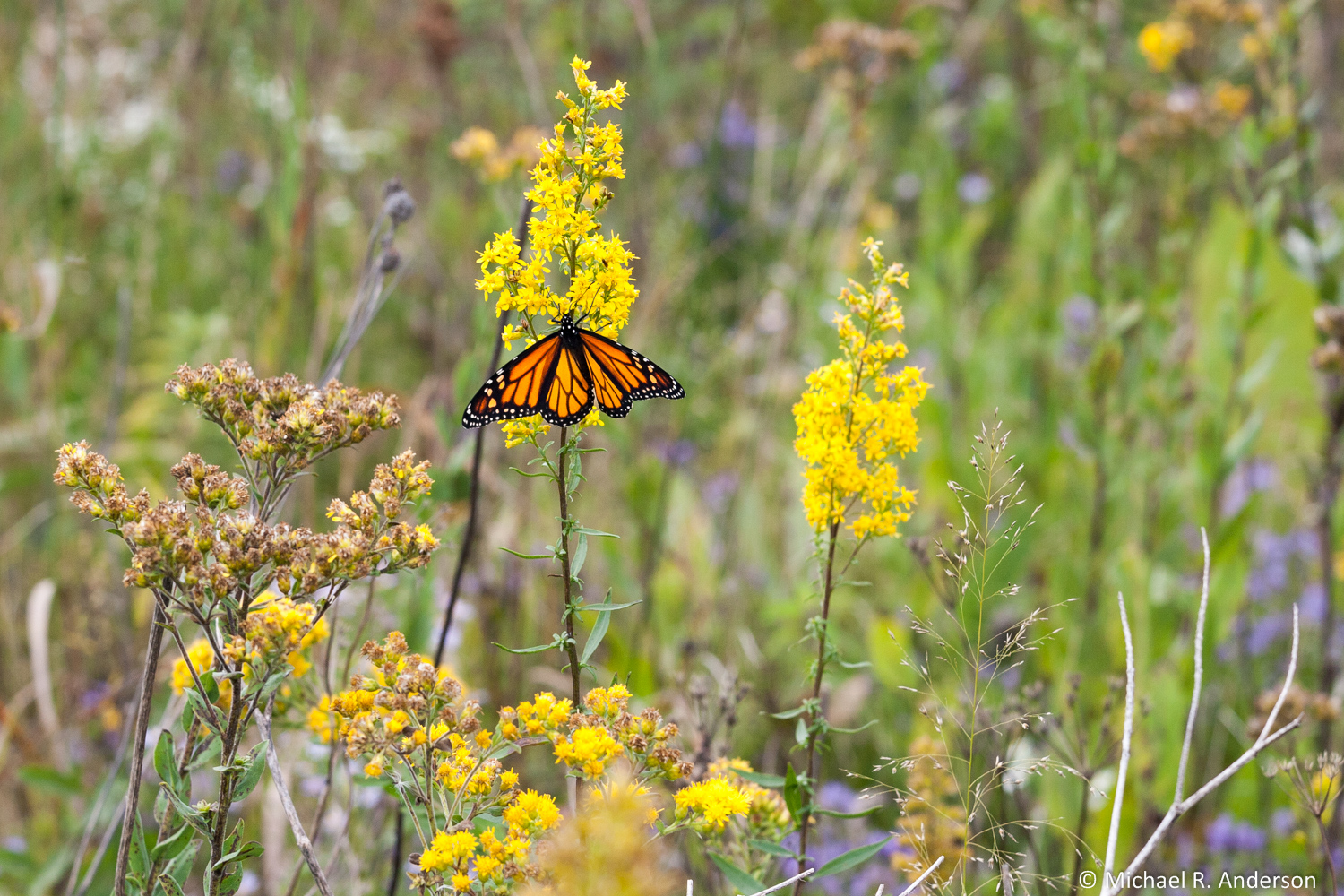
The event started with a short class. Audubon staff told us about monarchs and their migrations. We were also told how to use the markings on the wings to determine the sex. Then they showed us how to use a net to capture butterflies or how to catch them by hand. Finally, they demonstrated tagging. The monarchs that were tagged for the demonstration were handed out so that some of the volunteers could release them. We then separated into several groups and headed out on our quest.
The area in which we were searching is a restored tall-grass prairie. We were informed that the monarchs would most likely be found on goldenrod, especially Showy Goldenrod. Some of the grasses and flowers were 5 to 6 feet tall. The shorter members of the group almost disappeared in the sea of grass. Our task was to catch monarchs, determine their sex, note the kinds of flowers on which they were feeding, and bring them to the group leader for tagging. The butterflies were then allowed to flutter off and continue feeding.
I’ll close with the most interesting thing that I learned about monarch butterflies. As I said at the beginning of this post, monarchs are the only butterfly known to migrate on a round-trip route like birds. But, unlike birds, it takes many generations for monarchs to complete this trip. Monarchs have up to four generations a summer. Each of the first few generations travel further north from their winter habitat and, after 2 – 5 weeks, lay eggs for the next generation. The last generation of the year does not reproduce right away. It stocks up on nectar and then heads south. This generation will not reproduce until February or March after they begin their northward migration again. So, unlike the first few generations of the year, the migrating generation may live up to nine months. When you add to that the amazing process of egg to pupa to larva to adult that each generation goes through, the monarch butterfly has evolved an incredibly complicated life cycle. For their survival, it seems only reasonable that we give them a hand.
